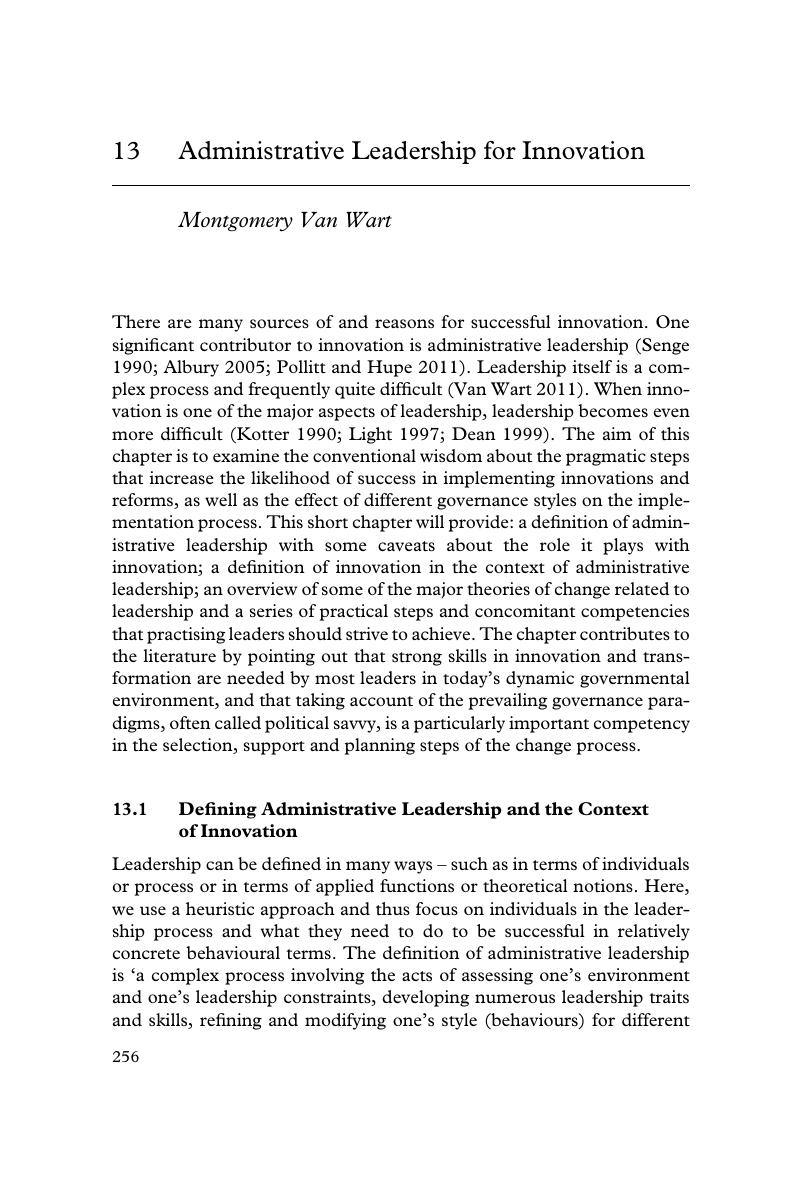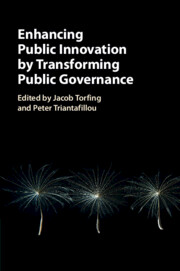Book contents
- Enhancing Public Innovation by Transforming Public Governance
- Enhancing Public Innovation by Transforming Public Governance
- Copyright page
- Contents
- Figures
- Tables
- Contributors
- 1 Enhancing Public Innovation by Transforming Public Governance?
- Part I Linking Governance and Innovation
- Part II Changing Roles of Public and Private Actors
- Part III Transforming Governance to Enhance Innovation
- 11 Public Innovation and Organizational Structure
- 12 Can Command and Incentive Systems Enhance Motivation and Public Innovation?
- 13 Administrative Leadership for Innovation
- 14 Thinking Allowed
- 15 Organizational Innovations and Multiple Forms of Accountability in the Post-New Public Management Era
- 16 Can Public Governance Be Changed to Enhance Innovation?
- 17 Conclusion
- Index
- References
13 - Administrative Leadership for Innovation
from Part III - Transforming Governance to Enhance Innovation
Published online by Cambridge University Press: 05 August 2016
- Enhancing Public Innovation by Transforming Public Governance
- Enhancing Public Innovation by Transforming Public Governance
- Copyright page
- Contents
- Figures
- Tables
- Contributors
- 1 Enhancing Public Innovation by Transforming Public Governance?
- Part I Linking Governance and Innovation
- Part II Changing Roles of Public and Private Actors
- Part III Transforming Governance to Enhance Innovation
- 11 Public Innovation and Organizational Structure
- 12 Can Command and Incentive Systems Enhance Motivation and Public Innovation?
- 13 Administrative Leadership for Innovation
- 14 Thinking Allowed
- 15 Organizational Innovations and Multiple Forms of Accountability in the Post-New Public Management Era
- 16 Can Public Governance Be Changed to Enhance Innovation?
- 17 Conclusion
- Index
- References
Summary

- Type
- Chapter
- Information
- Enhancing Public Innovation by Transforming Public Governance , pp. 256 - 272Publisher: Cambridge University PressPrint publication year: 2016



